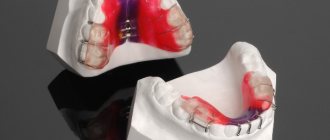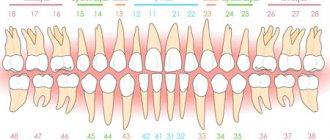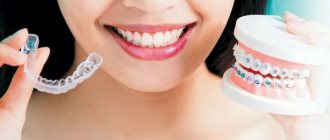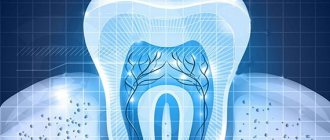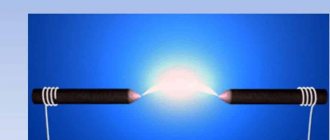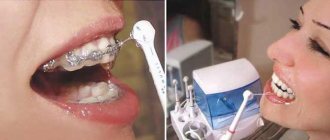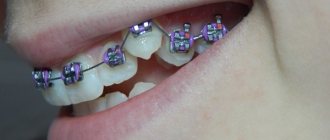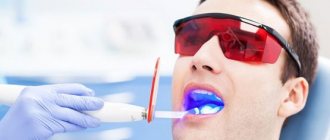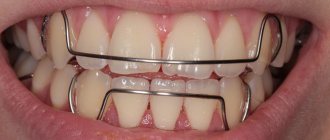Physiotherapeutic techniques are widely used in medical practice, as they contribute to the patient’s recovery and prevent the development of undesirable consequences from the disease. In clinical practice, methods based on the positive effect of electric current on the human body are often used. Fluctuarization in physiotherapy involves the effect of a sinusoidal pulse current with a low frequency on internal organs and skin. The method is widely used in modern medicine, in particular dentistry. It is important to note that the physiotherapy procedure can be carried out both in a hospital or clinic, and at home after being prescribed by a doctor.
Fluctuarization is an auxiliary treatment method used as part of complex therapy in dentistry and other fields of medicine.
About the method
The mechanisms of action of fluctuarization are similar to amplipulse therapy and diadynamic therapy. Such physiotherapy differs from these procedures in having a “softer” effect on the tissues of the body, since the electric current is characterized by asynchrony, aperiodicity and randomness of impulses, thereby allowing it to have a therapeutic effect with an insignificant influence.
In addition, the use of the method shows high efficiency compared to other types of physical treatment. This is due to the fact that during an asynchronous effect on the body’s cells, a change in their work is observed after the first procedure.
Fluctuarization in dentistry and other areas of medicine makes it possible to have a complex effect on the human body:
- pronounced anti-inflammatory and anti-edematous effect;
- increasing the speed of blood flow and outflow of lymphatic fluid from tissues;
- reduction in the severity of pain.
The large number of positive effects from the use of the procedure determines its use as part of complex treatment for a large number of patients with various pathologies.
Selecting patients for physical therapy
All treatment methods are associated with the risk of side effects or ineffective use. In order to achieve maximum effect from the use of therapeutic procedures, doctors follow certain indications and contraindications when prescribing them. It is recommended to prescribe fluctuarization (flyuktuorizaciya) for the following conditions:
- degenerative changes in intervertebral discs with the development of osteochondrosis and radicular syndrome;
- arthritis and arthrosis of any cause;
- diseases of the peripheral nervous system;
- dental pathology: pulpitis, periodontitis, alveolitis and pain after tooth extraction;
- postoperative rehabilitation;
- diseases in gynecology.
In addition to the indications, doctors should also observe contraindications for fluctuarization for successful therapy:
- benign or malignant tumors;
- serious condition of patients due to pathology of internal organs;
- disruption of hemostasis;
- increased body temperature, including with an unknown cause;
- presence of a pacemaker or other metal devices;
- intolerance to electric current;
- impaired skin sensitivity.
If any of these contraindications are identified, fluctuarization should not be used. Otherwise, there is a high risk of progression of concomitant pathologies.
Indications for use
Indications for fluctuarization:
- dental pathologies: chronic periodontitis in the acute phase, pulpitis, alveolitis, pain after dental filling;
- dystrophic changes in the tissues of the temporomandibular joint (TMJ arthrosis);
- deforming arthrosis in the acute stage;
- osteochondrosis of the spine with symptoms of lumbar ischialgia, lumbodynia, thoracalgia, cervicalgia;
- neuralgia of the occipital and trigeminal nerves;
- chronic inflammation of the genital area in women (salpingoophoritis), etc.
Fluctuarization is contraindicated in the presence of malignant neoplasms, thromboangiitis obliterans (Buerger's disease), bleeding tendencies, decompensation of cardiovascular diseases, an installed pacemaker and the presence of metal foreign bodies (metal osteosynthesis, artificial joints, etc.).
Types of electrotherapy
Fluctuarization is a method of physiotherapy that involves the effect of electric current on the human body. In this case, the current can have different shapes, which determines its biological effects.
Before performing a physical procedure, the attending physician carefully explains to the patient the course of treatment, as well as its possible risks.
Alternating current with symmetrical pulses is characterized by a constant change of positive and negative polarity. According to the instructions for the equipment, this type of current has the greatest depth of penetration deep into the body, and therefore is used to treat diseases of internal organs, blood vessels and diseases of the musculoskeletal system.
The bipolar type of current differs from the previous one in that the impulses are always negative. This type of physiotherapy allows the use of fluctuarization as medicinal electrophoresis, combining the effects of electric current with the use of drugs if there are indications for their use.
Rectified currents with one polarity have the ability to fluctuate in amplitude and frequency. This causes their galvanic effect, as a result of which the tissues begin to fluctuate. The procedure can also be supplemented with the use of medications.
Existing devices from different manufacturers have different fluctuarization modes. The choice of a specific type of current, as well as the frequency and duration of the procedure, is selected only by the attending physician.
Fluctuarization
Fluctuarization is a method of electrotherapy using sinusoidal pulsed current with a frequency in the range from 40 to 2000 Hz, the intensity of which is adjustable from 1 to 40 mA.
Possible current forms generated by the device:
- I current form is a bipolar symmetrical fluctuating current, in which the pulses spontaneously chaotically change in amplitude and frequency in both positive and negative polarity;
- II form of current is a bipolar asymmetrical fluctuating current, when impulses spontaneously chaotically varying in amplitude and frequency are emitted predominantly in negative polarity. Each surge in positive polarity corresponds to 2-3 surges in negative polarity;
- III current form is a unipolar fluctuating current, when impulses spontaneously chaotically varying in amplitude and frequency are only in negative polarity, and there are no surges in positive polarity.
According to the mechanism of therapeutic action, fluctuating currents approach the mechanism of therapeutic action of diadynamic and sinusoidal modulated currents. In terms of therapeutic effectiveness, fluctuating currents in some cases are superior to diadynamic and sinusoidal modulated currents. When using fluctuating currents, the likelihood of addiction to the stimulus decreases. Rhythmic stimulation of peripheral nerve receptors by current already during the procedure has an analgesic effect. Due to myostimulation, blood and lymph circulation improves, which provides an anti-inflammatory, anti-edematous, absorbable effect. When using I form of current, the effect on deep-lying tissues (subcutaneous tissue, muscles, internal organs, blood and lymph circulation) is more pronounced, and when using II and especially III forms, the irritating, analgesic and myostimulating effect is enhanced. With the help of the III form of current, it is possible to influence the fluctuating current and introduce drug ions into biological tissues - the so-called fluctuophoresis.
Equipment: “El Aesculapius MedTeCo” device, “AFT SI-01-MicroMed” device, “ASB-2”, “ASB-3”.
Dosing. The intensity is dosed according to the current density per 1 cm2. Low intensity - up to 1 mA/cm2, medium - up to 2 mA/cm2 and high intensity - 3 mA/cm2. At low intensity, tingling appears under the electrodes, at medium intensity, weak vibration of the superficial muscles, at high intensity, intense visible asynchronous vibration of the superficial and deep muscles in the interelectrode space. The exposure time is prescribed from 5 to 15 minutes. The course of treatment is from 5 to 10 procedures.
Indications
- exacerbation of chronic periodontitis, pulpitis, alveolitis, post-filling pain, arthrosis-arthritis of the temporomandibular joint;
- neuralgia of the trigeminal, occipital nerve;
- osteochondrosis of the spine with symptoms of cervicalgia, thoracalgia, lumbodynia, lumbar ischialgia;
- deforming arthrosis in the acute stage;
- chronic adnexitis.
Contraindications
- malignant neoplasms;
- cardiovascular diseases in the stage of decompensation, thrombolytic process, tendency to bleeding;
- implanted pacemaker, metal foreign bodies in body tissues (metal osteosynthesis, artificial joints, etc.).
Some methods of performing procedures
Fluctuarization in arthrosis-arthritis of the temporomandibular joint
Two plate electrodes measuring 3 x 4 cm are applied transversely to the area of the temporomandibular joints and fixed with a bandage. The first form of current is applied at low and medium intensity for 10-12 minutes. The course of treatment is 10-12 procedures.
Fluctuarization of the tooth area with post-filling pain
Two plate electrodes measuring 3 x 4 cm are placed transversely on the jaw area, a cathode is placed above the affected tooth, the electrodes are fixed with a bandage. They are exposed to the II or III form of current of medium intensity. The duration of the procedure is 6-8 minutes daily. The course of treatment is 7-8 procedures.
Fluctuation of gums due to periodontal disease, periodontitis
Between the mucous membranes of the upper and lower lips and the mucous membrane of the gums, gauze turundas moistened with a medicinal solution (B vitamins, nicotinic acid, aloe, noshpa, silt mud extract, etc.) are placed. An electrode measuring 5 x 10 cm is placed on the skin of the upper and lower jaws, polarity according to the administered drug (intracavitary technique). An electrode measuring 10 x 10 cm is placed on the upper cervical spine. They are exposed to II or III form of current of medium intensity. The duration of the procedure is 10-12 minutes daily or every other day. The course of treatment is 8-10 procedures.
Fluctuarization in trigeminal neuralgia
A positive polarity electrode measuring 10 x 10 cm is placed on the forearm of the right hand. A negative polarity electrode measuring 1.5 x 1.5 cm is placed at the exit point of the 1st branch (superciliary arch), then 2 branches (lower edge of the orbit) and then 3 branches (chin) of the trigeminal nerve. They are exposed to either the III form of current. The intensity is average. The duration of exposure is 3 minutes on each branch of the trigeminal nerve in turn. The course of treatment is 6-8 procedures.
Fluctuarization in cervical, thoracic, lumbosacral radiculopathy with severe pain syndrome
Two electrodes of the same size 5 x 15 cm are placed paravertebrally on the cervical thoracic or lumbosacral spine. On the pain side there is an electrode of negative polarity. For severe pain, I and II forms of current of medium intensity are used, and for chronic radiculopathy with moderate pain, forms II and III of current of medium and high intensity are used. If necessary, reverse the polarity. Duration of exposure 12-15 minutes. The course of treatment is 10-12 procedures.
Fluctuarization in coxarthrosis
During one procedure, two placements of electrodes measuring 10 x 15 cm are used: the subgluteal fold - the groin area (impact on the hip joint) and the sacrogluteal region - the greater trochanter (hip joint capsule). Apply the first form of current of medium and sick intensity. The duration of exposure is 6-8 minutes for each installation. The course of treatment is 12-15 procedures.
Fluctuarization in chronic adnexitis with moderate pain syndrome
Intracavitary fluctuophoresis of lidase from the rectum is used. A unit of action (U) of lidase is dissolved in an acidified buffer solution and 50 ml of solution is injected into the rectum. A disposable electrode is inserted into the rectum and connected to the positive pole of the device. In the absence of a cavity electrode, a plate electrode of positive polarity measuring 10-15 cm is placed on the sacrum, and a similar size electrode of negative polarity is placed in the suprapubic region. Apply II and III forms of current of medium intensity. Duration of exposure is 15 minutes daily. The course of treatment is 10-12 procedures.
Therapy devices
In clinical practice, a large number of instruments are used to carry out the procedure. The most famous device for fluctuarization is “ASB-2-1”, however, in recent years its use has decreased significantly due to the need for additional grounding of the device during operation.
The most frequently used devices in clinical practice are: therapeutic equipment “FT-30-05” and “ASB-2M”, a device used in dental practice “FS-100”. The latter device is often used to combat toothache and to treat inflammatory gum diseases. ASB-2M differs from its analogues in its ability to use various types of electric current and modes of exposure.
The choice of a specific device for physiotherapy is determined by the attending physician depending on the patient’s indications and contraindications.
Carrying out the technique
To carry out fluctuarization, various types of devices are used. The procedure can be carried out both in a medical institution and at home. It is important to note that when performing the method at home, the patient or people close to him must undergo special training in a physiotherapy room. Otherwise, the treatment may cause undesirable consequences in the person.
At the beginning of treatment, the doctor informs the patient about the upcoming treatment session and explains to him the rules of the procedure. After this, fluctuarization is performed according to the following algorithm:
- The patient lies down or sits on a couch or chair, respectively.
- Electrodes are placed at the intended site of influence. The number of electrodes, as well as their shape, are determined by the localization of the pathological process and the available equipment.
- The device is always turned on at minimum current values. After this, the current strength gradually increases until the patient feels a slight tingling sensation on the skin under the electrodes.
- At the end of the session, the device turns off and the electrodes are removed from the surface of the person’s body.
- If a procedure is necessary to treat dental problems, small area electrodes soldered together are used.
The duration of one physiotherapeutic procedure is from 5 to 40 minutes. The specific time of the session depends on the disease identified in the patient and the severity of the symptoms present. If physical therapy is performed for children, the duration of the session is halved. The number of procedures in a therapeutic course is 5-15 with an interval of 1-2 days, which is necessary for a full tissue response to the action of electric current.
If a repeat course is necessary, it is necessary to take a break of one to two months, after which the attending physician re-examines the patient, assessing his general condition.
Negative consequences
Reviews from doctors and patients indicate that fluctuarization rarely causes side effects. The method is well tolerated and can be used for a wide range of diseases of internal organs.
However, if the procedure is prescribed incorrectly, namely, non-compliance with indications and contraindications, patients may experience irritation and damage to the skin, progression of concomitant pathologies (malignant neoplasms, acute infectious processes, etc.). To prevent such conditions, patients should be thoroughly examined before undergoing physical treatment, and also report information about existing diseases to their doctor.
Physiotherapeutic techniques, including fluctuarization, are widely used in the treatment of diseases of internal organs and dentistry. Such methods make it possible to increase the effectiveness of complex therapy and reduce the risk of side effects. Fluctuarization can be performed at home after preliminary training from specialists, or in a medical institution under the supervision of medical professionals. The appointment and selection of a specific type of physiotherapy, as well as the parameters of the effect on the body, is always carried out by the attending physician. Any attempts at self-medication are fraught with the development of negative consequences and the progression of concomitant pathologies.
Features of the fluctuarization procedure
The procedure is performed by a physiotherapist.
The day before, the patient must undergo an examination, take a general blood test and receive a prescription from his attending physician. This is necessary to identify the presence of contraindications to the procedure and the peculiarities of its implementation, taking into account the clinical picture of the disease. The principle of operation of the fluctuarization method is based on the influence of pulsed currents on the neuromuscular system. Peripheral nerve receptors are irritated, and the patient feels a general calming effect already during the procedure. Under the influence of impulses, nerve receptors are irritated, muscle fibers contract, which contributes to the development of an analgesic effect and improvement of blood circulation in peripheral vessels.
Fluctuating currents do not cause addiction to the stimulus, and the procedure itself is tolerated comfortably.
